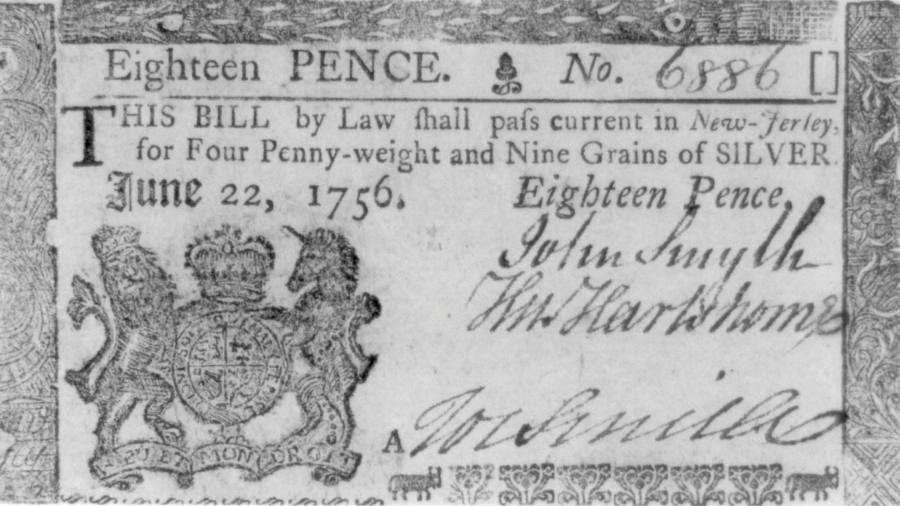
If you took a university course in economics, you probably learnt a simple history of money. First, people bartered. But barter was difficult because you need a “double coincidence of wants”: I have to want what you have, and you have to want what I have. So people used bits of valuable metal to make the barter easier. Then paper came to represent the metal, and the paper took on value. Ta da! Money.
That history was selective and highly political. As the US government continues to create new dollars, and cryptocurrencies compete to see which can appreciate faster, we are seeing a renewal of an old argument over the history of money. Whoever controls what we use as money has great power. So there has always been a strong incentive to say that the only historical true nature of money is oh, wow, look! It’s the thing I have!
The phrase double coincidence of wants comes originally from Stanley Jevons, a 19th-century economist from the UK who published a detailed history of money in 1890. He arrived at the particularly Victorian conclusion that the UK was right: peg money to gold, a valuable commodity that would naturally flow with trade to where it was needed.
Two decades later Alfred Mitchell-Innes, a British diplomat, laid out a history that financiers should find comforting. Credit did not follow money, he argued. Credit came first. It was money. Archaeologists had found records of debts in ancient digs. In Italy, 3,000-year-old iron discs had been snapped in half right after they were forged — one-half for the creditor, one-half for the debtor. In Germany, there were similar snapped discs, made of a silver alloy. In the Fertile Crescent, there were clay debt markers, anonymised inside tamper-proof clay boxes. Coins were not the only way past a double coincidence.
I picked up Jevons and Mitchell-Innes again this week after reading The Bitcoin Standard, by Saifedean Ammous. It starts with the Jevons history: money is a commodity that improved barter. Then it concludes that gold had been the only proper money in the past, and that bitcoin is its only inheritor. Every history is a simplification. As Ammous simplifies, he makes clear his worries about the present.
When governments control money, he writes, they inflate away its value, to make war without paying a price. Inflation is a purely monetary phenomenon: produce more money, get more inflation. People do not need to be told to spend; they will do that on their own. But people do need to be encouraged to save, in a rare currency that continues to appreciate. Under these assumptions, he argues, the only rational defence against the tyranny of government credit money is to buy the rare commodity money of bitcoin.
If you believe these assumptions, please, buy bitcoin. But it is also easy to find examples in history where they do not hold up. Sometimes people prudently gathered their savings in hard coin. But sometimes trade took the coins somewhere else, and people found themselves without hard money, in a deflation they could not control. In those cases, people did what they always do: they found a way to create money that worked.
In the 18th century, American colonies got just a tiny share of the global currency of their time, a flow of hard silver coins that went straight from the Andes to China. Merchants in those colonies did not patiently stack the coins they had and sit out a deflation. They pushed to alter local exchange rates to pull in more silver, then ultimately pushed colonial governments to create paper credit money, colony by colony. Some of these paper notes collapsed. Some inflated in value but continued to circulate. Some notes, such as Pennsylvania’s, held on to their value just fine. That paper does not seem like tyranny; it seems like an adaptation to circumstance.
There is no one true nature of money. Almost anywhere you look, you can find both hard coin and credit circulating together. Castile’s Habsburg kings had silver from the Americas, but financed their wars with credit. Renaissance Florence and Venice had gold from Africa, but financed their trade with credit. Merchants at the medieval wool fairs at Burgos cancelled out each others’ trade debts, then settled what was left with coins.
And over the past week, the texts from my friends from childhood have focused not on bitcoin, but on dogecoin, an expansion of the supply of money created as a joke about a dog. People have ways of creating the money they want. There has never been a good way to stop them.
